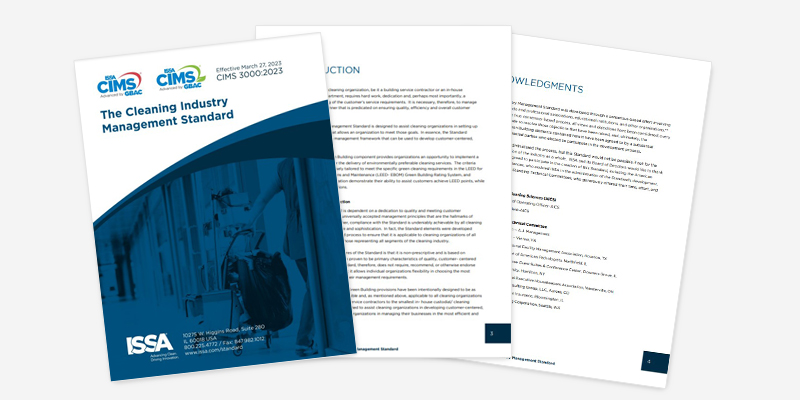The Necessary Evil

In a series of articles, we will explore how distributors, manufacturers, and building service contractors can develop proven sales programs that work, resulting in more business with direct sales efforts.
Why is this such a hot topic today? Selling has changed tremendously over the past two decades. There are more competitors in almost every market, it is more difficult than ever before to secure meetings with potential customers, and the way prospects want to interact with salespeople has changed dramatically.
Yet… direct selling is a necessary “evil.” You must do it–and yet you probably find it frustrating because of changes you see unfolding every day right before your eyes.
The internet is the major driver of these changes because it allows prospects to discover most of the information that they need to make a buying decision—without involving a salesperson. The radically increased availability of information of all kinds has also caused buyers to become more sophisticated and they won’t tolerate “Joe Salesman” or “time-waster” type salespeople.
Salespeople of today are finding that:
- It is more difficult to reach prospects
- Prospects do not have time or are not willing to meet
- There is much greater resistance
- Salespeople tend to be invited in later in the sales cycle
- There is far more price sensitivity
- Prospects are more cautious and conservative about spending their money
- Relationships don’t mean what they once did.
Fundamentally, the traditional hard-sell approach based on the presentation of features and benefits (“show up and throw up”) no longer works. In the absence of current sales training or effective sales management, many salespeople are left to fend for themselves and have fallen into the “quote and pray” methodology, which only serves to accelerate the race to the bottom of price commoditization.
Salesmanship has evolved over the past few decades as well. The term “consultative selling” is in common use, but the definition or interpretation of what this actually means varies widely.
Generally speaking, consultative selling is based on the identification of a prospect’s pains or motivations to change, exploring these pains in some depth following a specific sales and communications process, and then presenting a solution.
However, most salespeople do not really sell this way, although they exhibit some of the markers of consultative selling. They ask more questions, but when a question leads to an issue or pain, they get the “selling too soon” disease and leap right into their solutions to the problem, which often undermines their efforts. While this can result in better outcomes than “show up and throw up,” it still falls far short of what is required today for best results.
When consultative selling is done properly, it allows a salesperson to differentiate, sell valued, specific, and customized solutions, and come to be viewed as a trusted advisor or a valued consultant.
This can only happen after a salesperson has asked enough questions (sometimes dozens) to go as wide and deep as possible, leading to a discussion of issues, opportunities, implications, and potential outcomes.
As much as consultative selling relies on highly developed questioning skills, equally well developed listening skills are even more important. To be effective today, salespeople must become consultants or run the risk of becoming obsolete.
In order to provide alternatives and solutions to these issues, let’s think of consultative sales organizations as opposed to consultative salespeople or salesmanship. The primary reason for this is that in order for consultative selling to be effective, it must rest on an organization’s marketing strategy and be delivered by the organization as a whole.
Another useful way to define marketing strategy is to think of it as differentiation strategy. Simply put, this is what makes your company different and better than the competition and provides compelling reasons for people to do business with your company, rather than the hundreds of competitors that are also calling on them. Note that compelling reasons will always be about your client and the issues they care about, not the features and benefits of your products and services—except as they address those pains.
It is also important to recognize that your strategy may have several components. While it might be ideal to focus on a single strategic attribute, for most of you, that will not be enough.
There are broad strategic elements to your value proposition that speak to the fundamental aspect of who you are as a company, and there are tactical components that generally speak to the specific business pains or challenges facing the people that you want to do business with. This combination of strategy and tactics becomes your value proposition—a concise, highly focused set of reasons why someone should choose your company exclusively, make you a preferred vendor, or buy your product or service.
The place where many would-be sales organizations run off the rails is a misunderstanding about the strategic and tactical deliverables of the value proposition. In other words, your value proposition will tell prospects what is different and better about you. By definition, your value proposition must not be the same old tired attributes that your competition can also easily claim, such as quality, delivery, service, etc. Quite frankly, such claims are now the price of entry into the game.
So, whatever your value proposition is, you must deliver on those promises organizationally. If you fail to do that, your business development team is essentially lying to their prospects and clients. Not only will clients completely lose trust in your salespeople and your company when they realize that you didn’t mean what you said, but your salespeople will become demotivated, leading to mediocre effort on their part or looking for a “real” sales job where the company is serious about business development.
Developing a powerful marketing strategy must start with your desired customers. This is because your strategy must focus on your customers and their pains, problems, and challenges. Those pains may, to a greater or lesser degree, be focused on an area of the business related to your products and services, but don’t constrain yourself when doing strategic planning.
Change your perspective
Can your business do any of these things? How about something similar? Perhaps you have never really thought about your products or services from this perspective. Today, you must.
The salesperson of today needs to be more of a business consultant than a problem solver. What do business consultants do? They help their clients make money, save money, and avoid risk.
As you refine your methods, you may need to work on how your broad strategy can address all of the verticals you work with, as well as how to create vertical specific tactical programs to provide specific deliverables to address specific pains. In a very practical way, this process is joining together the marketing and sales functions of your organization to determine what to sell as well as how to sell it. Simply improving one without the other is an exercise in futility.
In our next article, we’ll discuss how to utilize a sales process to drive your value proposition in the market.

















